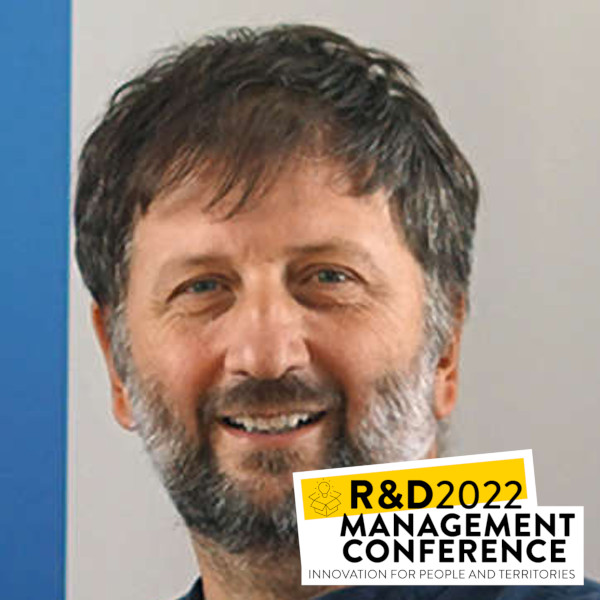One emerging prescription that’s getting a lot of attention is design thinking, and it is increasingly being adopted in R&D departments and teams.
In their paper ‘Blind faith or hard evidence? Exploring the indirect performance impact of design thinking practices in R&D‘ Peter Robbins (Irish Institute of Digital Business, Dublin City University) and Na Fu (Trinity College, Dublin) ask “is there hard evidence to support the use of design thinking in R&D?”.
Here they provide an overview of design thinking and reviews some of their findings.
Is design thinking at the top of the hype cycle?
Much of the writing on design thinking has been published by expert practitioners and the evidence of its impact has been largely either single case studies or anecdotal.
Prior research has given indications that design thinking does, in fact, boost innovation performance for the firms that adopt it.
However, the question remains: what specific value does design thinking add? Does it actually work – and if it does, how does it work?
This article attempts to answer those questions by surveying R&D-intensive firms which are innovation-active to discover where design thinking sits in their overall innovation toolbox and the impact they believe it’s having on their innovation capability and outcomes.
Design Thinking offers a structured approach
Despite so much being written about it, design thinking is an umbrella construct and that makes it hard to operationalise.
Design thinking is characterised by its emphasis on assembling a multidisciplinary team to explore the opportunity or problem being addressed. At heart, it is a structured, end to end methodology for new product and service development.
It begins with ethnographic research in order to develop empathy with, and derive often surprising and, ideally, actionable insights about users. It then proceeds to ideation and brainstorming to explore possible solutions for improving the user experience, and refines concepts through an iterative process of prototyping as a fast and effective source of communication and learning among stakeholders.
Some authors see design thinking as a philosophy, others a set of rules – but increasingly design thinking is getting operationalised as a set of tools or practises used in pursuit of innovation.
Specifically, there are eight key tools in the design thinking toolkit:
- – The use of ethnography
- – Persona’s to represent consumer segments
- – Journey Mapping
- – Brainstorming
- – Mind Maps
- – Visualisation
- – Prototyping
- – Experiments (usually field experiments)
How does Design Thinking boost performance?
Our study investigates if and how the adoption of design thinking boosts an organisations’ innovation performance. To answer these questions we fielded two studies (one explorative and the other confirmative).
Study 1: an explorative study to investigate R&D professionals’ opinions about the performance impact of design thinking
An online survey was sent via the Industry Research & Development Group (IRDG) to their 1,806 member organisations. The IRDG is an industry-led and independent industry representative group for manufacturing and services companies involved in research, development and innovation in Ireland.
| Organisational Performance Outcomes driven by Design Thinking | Yes |
| Doing smarter new product/service development | 78% |
| Improving our innovation process overall | 63% |
| Making the firm more user-centred | 59% |
| Getting the voice of the consumer into the process | 56% |
| Co-creating and engaging with consumers | 53% |
Study 2: an empirical test of the performance impact of design thinking
Study 2 surveyed R&D professionals based in Ireland and used established scales to measure design thinking, organisational innovative capability, and performance.
Respondents were asked to indicate their organisational innovative performance compared to their competitors based on a three-point Likert scale from 1 (weaker) to 3 (better).
The second confirmative study found that design-thinking practises actually do help to develop organisational innovative capability, which in turn increases organisational innovative performance, the so-called practice-capability-performance linkage model.
By identifying this linkable model, this research provides both theoretical and evidentiary support for a better understanding how design-thinking practises actually work to help drive successful innovation in R&D settings.
Below is the mechanism by which this works: organisations adopt design thinking processes in their R&D teams and such approached help boost their innovative capability and this in turn has a positive impact on their innovation output and performance.

Identifying a proven method for Design Thinking
The aim of this study was to investigate whether, and how, adopting the design-thinking practises in R&D management actually boosts organisational innovative performance.
This research conducted two studies involving R&D professionals. The first explorative study found that the adoption of design-thinking practises are important for enhancing teams’ innovation capability. The second found that this capability translated into innovation output and performance from innovation teams in R&D.
Several implications for R&D management emerge from our study
This study identifies a linkage model of design thinking practices-innovative capability-innovative performance (see figure above). It offers a theory-based and actionable approach regarding why and how a firm can influence its performance through the adoption of design-thinking practises and leverage their innovative capability in formulating and developing innovation.
Organisations in search of a proven method to help them navigate the precarious process of innovation in R&D can now engage in design thinking with considerable confidence.
For firms who have been uncertain about whether to introduce design thinking into their innovation approach, this paper gives them some additional, evidence-based assurance that design thinking is effective and will boost innovation productivity.
The paper “Blind faith or hard evidence? Exploring the indirect performance impact of design thinking practices in R&D” is published in R&D Management.




![PepsiCo's North American Beverages fleet [image credit: Melissa Golden; PepsiCo - from PepsiCo.com]](https://www.rndtoday.co.uk/wp-content/uploads/2023/09/PepsiCos-North-America-Beverages-Fleet-credit-PepsiCo-web-1024x683.jpg)





